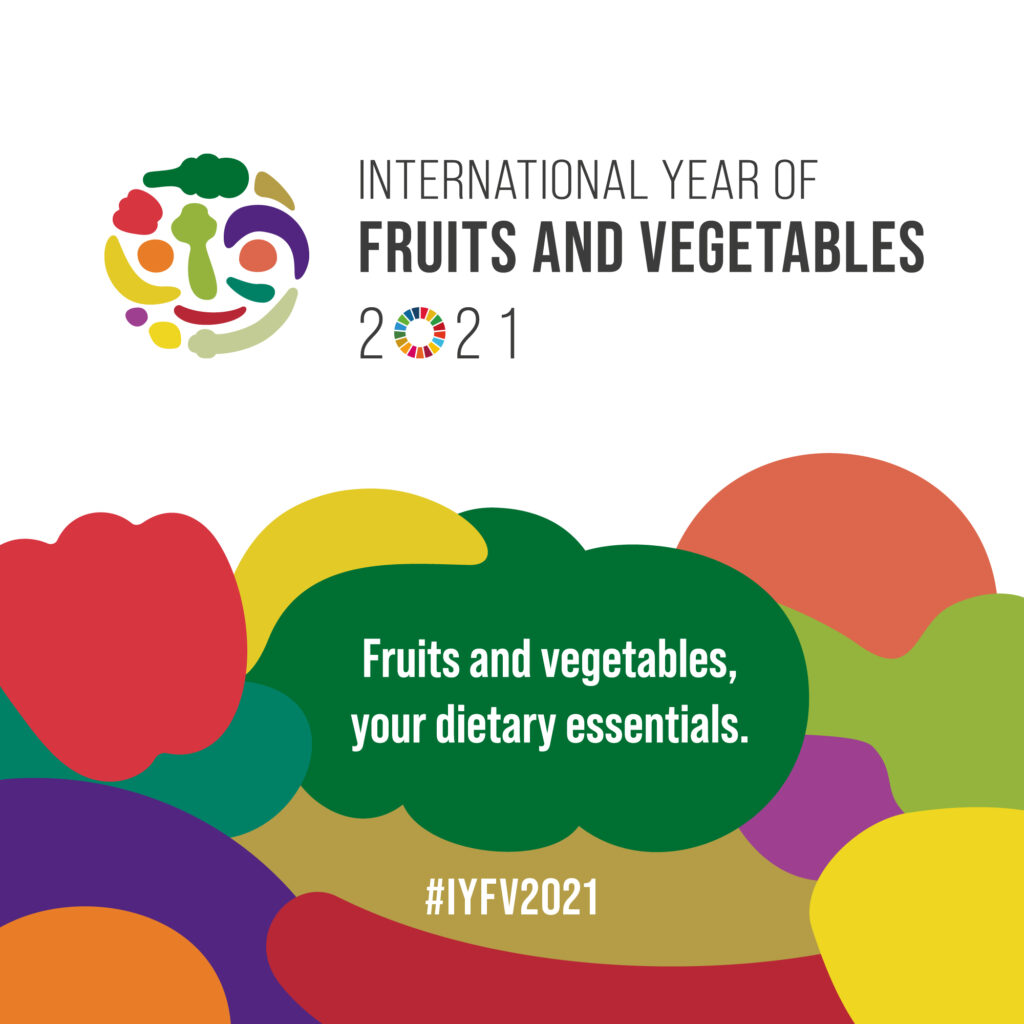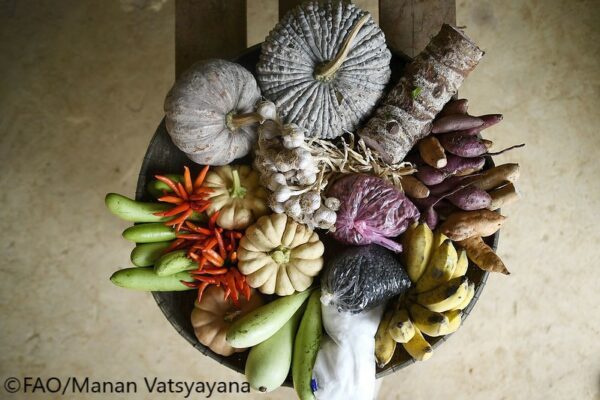Authors: KC Bansal and Ros Gleadow.
A balanced nutritional diet rich in minerals, antioxidants, and vitamins is of vital importance for human health. Fruits and vegetables are rich sources for most of these dietary phytochemicals and micronutrients. However, today’s most common diets consist mainly of starchy staples and less of nutrient-rich foods or fruits and vegetables, particularly in the developing world. Keeping in view that the UN General Assembly designated the year 2021 as the International Year of Fruits and Vegetables (FAO, 2020), greater emphasis needs to be placed on the usefulness of fruits and vegetables as part of our daily diets, especially when the world is passing through the risks of a pandemic caused by COVID -19. Fruits and vegetables are endowed with phenolic acids, flavonoids and carotenoids, which act as strong antioxidants and thus help prevent the damage caused by oxidative stress and reduce the risk of several human diseases (Guan et al, 2021).
While, fruits and vegetables are easily accepted as immunity enhancing food systems, efforts are needed for promoting them as diversified, balanced, and healthy components of our daily plant-based diets. Studies have shown that beta-carotene, vitamin A, vitamin B6, vitamin C, vitamin E, folate, iron, selenium and zinc – all known for boosting immune function in humans are found in many fruits and vegetables (Barnard et al, 2019).
Currently, research efforts are in progress to further enhance the nutritional and functional quality of a range of horticultural crops using modern approaches like genome editing technologies (Ku H-K and Ha S-H, 2020), to meet the increasing demands with sufficient quantities of the desired nutrients in a sustainable production system. For instance, efforts are in progress to increase lycopene and vitamin C content in tomato, altered anthocyanin biosynthesis in carrot, starch metabolism and improved tuber quality in potato, increased ascorbate content in lettuce, increased beta-carotene in banana, and so on.
In addition, there is an urgent necessity to recognise and promote the local agrobiodiversity including farmers’ varieties, landraces and wild edible fruit and vegetable species in diversifying diets in the local food systems and supporting the smallholder farmers for their livelihoods and incomes (Malik et al 2015). This is further highlighted in the State of the World’s report on Biodiversity for Food and Agriculture (FAO 2019) that narrates details about the countries regularly using wild foods in their national diets. In India, wild edible fruits rich in vitamins and minerals found in different forest tracts of the Indian subcontinent play a key role in meeting the nutritional requirements of rural and tribal communities (Mahapatra and Panda 2012).
dd
The Global Plant Council supports the International Year of Fruits and Vegetables and endorses a need to promote basic research on plant sciences and continued investment in research and development on plants with enhanced focus on fruits and vegetable species.
This will lead to increasing the fruits and vegetables production to address not only the challenges of nutritional insecurity but also for boosting the societal immunity that would help build healthy public lives.

References
Barnard ND, Goldman DM, Loomis JF, et al. Plant-based diets for cardiovascular safety and performance in endurance sports. Nutrients. 2019;11(1). pii: E130.
Guan, R et al (2021) A review of dietary phytochemicals and their relation to oxidative stress and human diseases. Chemosphere, Volume 271, May 2021, 129499.
FAO. 2020. Fruit and vegetables – your dietary essentials. The International Year of Fruits and Vegetables, 2021, Background paper. Rome https://doi.org/10.4060/cb2395en
FAO. 2019. The State of the World’s Biodiversity for Food and Agriculture. J. Bélanger & D. Pilling (eds.). FAO Commission on Genetic Resources for Food and Agriculture Assessments. Rome.
Ku H-K and Ha S-H (2020) Improving Nutritional and Functional Quality by Genome Editing of Crops: Status and Perspectives. Front. Plant Sci. 11:577313. doi: 10.3389/fpls.2020.577313
Mahapatra AK and Panda PC (2012). Wild edible fruit diversity and its significance in the livelihood of indigenous tribals: Evidence from eastern India. Food Security 4 (2): 219-234. DOI: 10.1007/s12571-012-0186-z
Malik SK, Rana JC, Bisht IS, Singh A, Singh PB and Bansal KC (2015) Small farms the treasure house of agrobiodiversity and model for sustainable agriculture. In: XII Agricultural Science Congress Proc., Srivastava AK, Datta TK, Vass, KK, Gupta VK and Ayyappan S (eds.) NDRI Karnal, India. pp 402-407.
Image credit: FAO/ Manan Vatsyayana






